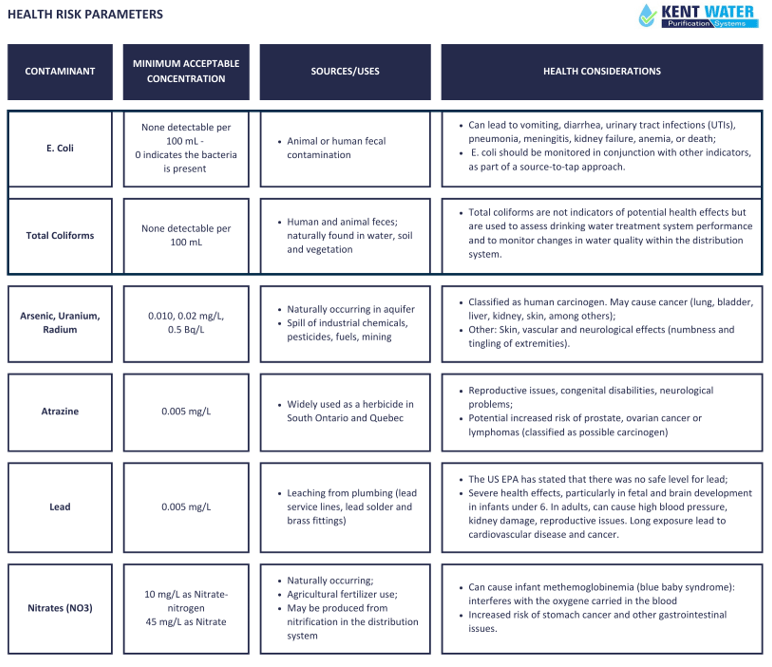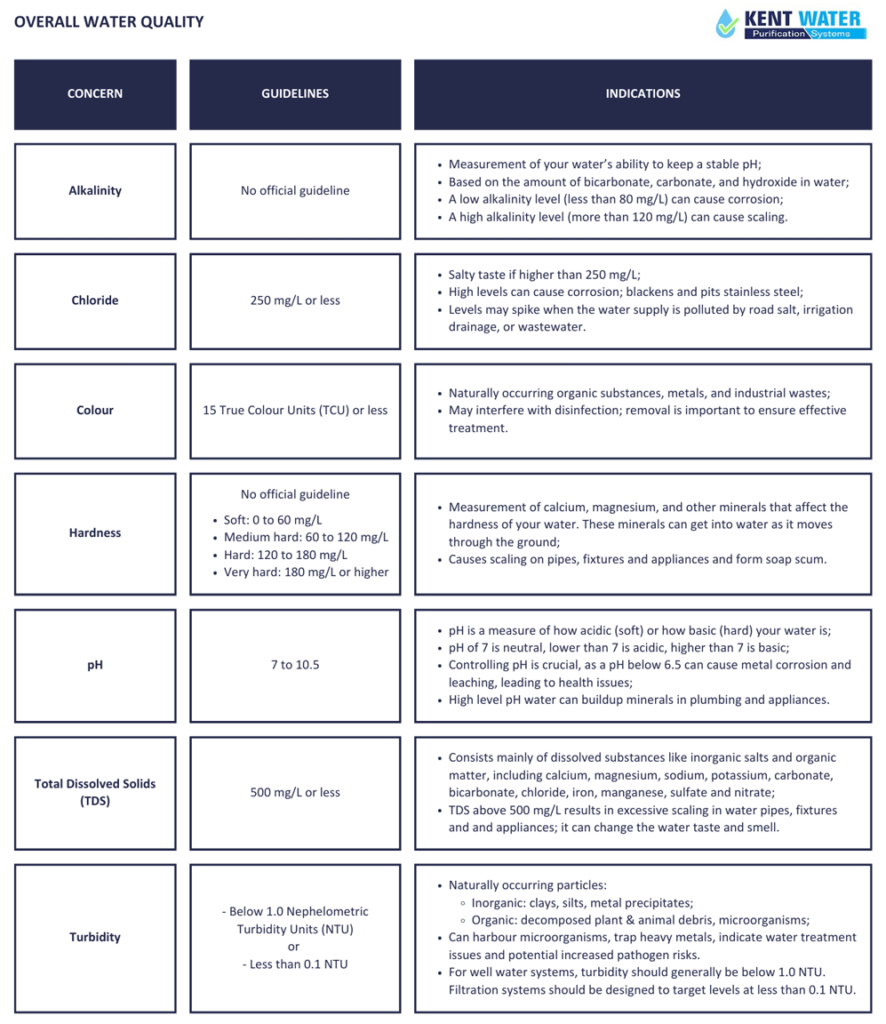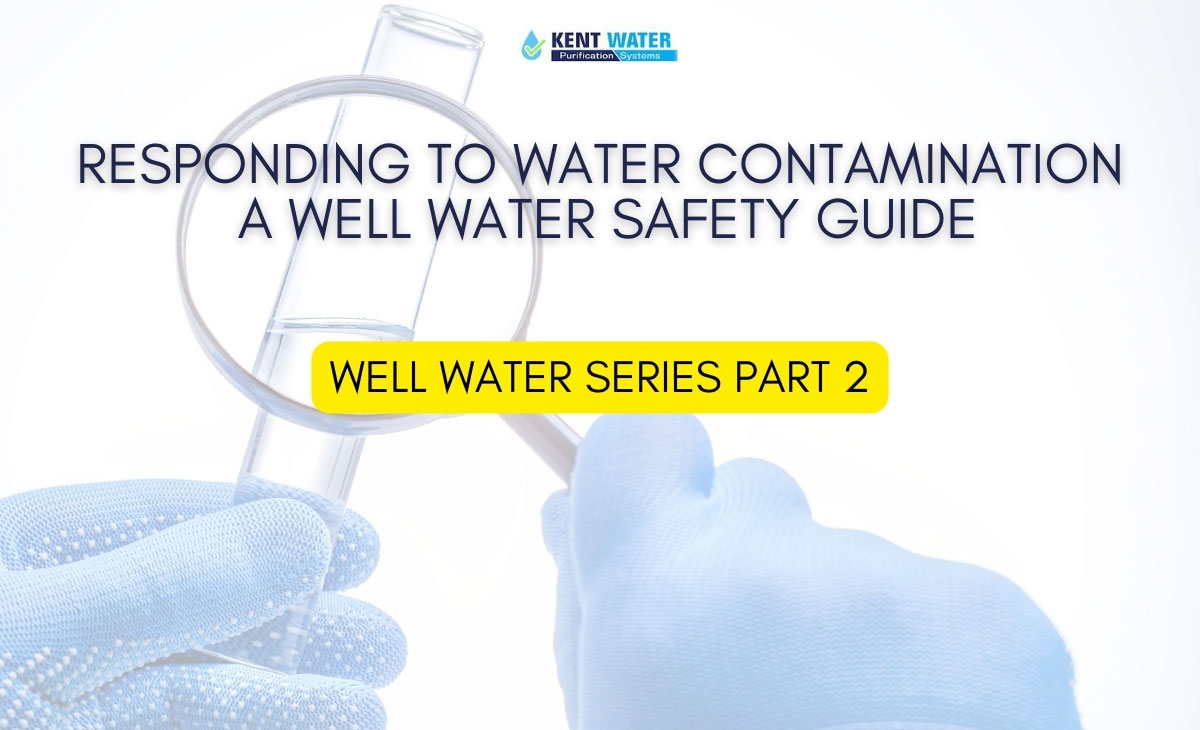Welcome to the second part of our Well Water Series! In the first installment of this series, we covered ten visible signs that may indicate contamination in your well water, thus requiring testing and treatment.
Indeed, it is important to be aware that various contaminants, including colourless tasteless, and odourless, can infiltrate your well water. Luckily, there are steps you can take to address these issues. This article provides a comprehensive guide on what to do if you notice any signs of contamination and explains how understanding potential pollutants can help you take appropriate measures. Follow our tips to ensure your well water remains safe and clean.
Steps to Take If Signs of Contamination Are Detected
If you notice signs of pollution in your water, there are immediate steps you should take before implementing long-term solutions.
Your and your family’s health is the priority. If you experience any physical symptoms of illness, such as gastrointestinal issues, headaches, or irritations, you should stop using the water from your well, especially if bacterial contamination is suspected. Remember that some contaminants, such as radioactive substances, pesticides, and solvents, are undetectable but can be extremely harmful to health.
- Find, Fix, Test, Treat
Next, identify potential sources of contamination and assess the problem. Here is a short checklist:
Find and Fix – First, gather information about your well’s construction and operation, including records from the well constructor. Inspect the well to ensure it is not the cause of water quality issues, with the help of a licensed contractor if needed. Ensure the area around your well is free of pollutants such as animal droppings and lawn care products, and that water is not pooling around it. Check the well cap, vents, and sealant for damage. Verify the pump, pressure tank, water treatment system, and septic system are operating properly. Clean the installation and fix any issues. Lastly, evaluate changes in the surrounding area on your and your neighbour’s property to see if any events impacted your well.
Test and Treat – If you suspect microbial contamination in your water, get it tested for E. coli and total coliform, free of charge by your local public health authorities. If these pathogens are detected, your water is unsafe to drink, and you should treat your well with chlorinated shock disinfection. Furthermore, even if your water tests negative for these bacteria, it may still contain other harmful contaminants. Therefore, regularly conducting comprehensive tests with accredited professionals is essential. It will allow you to treat your water accordingly by implementing an appropriate water treatment solution, such as a filtration system or water softener.
Importance of Regular Testing
Since well water is constantly susceptible to various pollutants, regular testing is crucial to ensure its safety and quality. Indeed, it is a proactive step to identify potential health risks and anticipate plumbing damage before they become severe problems.
How often should you test your well water? It is recommended to get your water tested at least three times per year or even more. Test your water for E. coli and total coliform bacteria every six months, and test it yearly for nitrates, total dissolved solids, lead, and pH levels. Perform a full-screen test every two years for contaminants such as pesticides, tannins, hardness, chloride, sulfate, iron, and copper, among others. Additionally, you may want to test for volatile organic compounds (VOCs), pharmaceutical substances, microplastics, and PFAS as needed.
When should you test your well water? Sampling is especially appropriate after significant environmental changes that increase the risk of contamination. Check your well at least every spring after thaw, and also during the fall rainy season, after a long dry spell, following heavy rains or floods, or if the well has been unused for an extended period. Test your water whenever unexpected events arise, such as exceptionally high temperatures, fires, nearby construction, agricultural or industrial leaks, sewage failures, or if you notice any changes in your water quality.
Understanding Analysis Reports
To go further, understanding water test results is essential for pinpointing the specific contaminants present in your water source and their concentrations, enabling you to determine the appropriate treatment methods.
Interpreting these results involves comparing them with established safety standards and guidelines set by Health Canada in their Guidelines for Canadian Drinking Water Quality, followed and sometimes exceeded by the provincial governments, some of which provided tools to help you with the interpretation.
These guidelines determine the substance amount limits, distinguishing two categories:
- Minimum Acceptable Concentrations (MAC) are the highest levels of a contaminant in drinking water considered safe for a person to drink. Above these limits, it can be harmful to health.
- Aesthetic Objectives (AO) address parameters which may affect consumer acceptance of drinking water, considering the taste, odour, and visual effects of water.
Your water test report will contain a list of pollutants and their concentrations and may highlight data requiring your attention. They are measured in specific units: most are reported in milligrams per litre of water (mg/L), while microorganisms are measured in parts per 100 millilitres (ct/100mL), 1 part being 1 gram in 100 millilitres of water. Radioactive contaminants are reported in becquerels per litre (Bq/L). Other values, like pH, turbidity, or conductivity, are reported in their own units.
Here are samples of what your report could look like:

Water Test Parameters
For a more thorough apprehension of the potential contents of your well water and their significance, the tables below offer a general guideline and summary of common quality parameters that can be present in your analysis report, based on Health Canada’s standards.
The parameters in Table 1 are the pathogens that make water unsafe to drink and some contaminants that have known health effects. The table lists minimum acceptable limits, possible uses and sources, and potential health impacts.

The parameters in Table 2 are overall indicators used to give an initial overview of your well water quality. Generally, if the indicator is present, the supply may contain the corresponding pollutants.

Ultimately, the parameters in Table 3 are common contaminants from the “Aesthetic Objectives” category. While not typically harmful, they can have undesirable effects leading to problematic consequences.

Preventative Measures to Maintain Water Quality
Now that you know the considerations for water safety, you can take appropriate action. As a well owner, it is your responsibility to ensure that your water supply remains clean and safe for consumption both now and in the future. To achieve this and for peace of mind, it is essential to take a few preventative measures that will be very helpful.
As mentioned above, routinely testing well water is crucial for maintaining constant water quality. It helps to ensure it is safe to drink and use, anticipate serious effects of pollution and reveal any issues with the well structure or surrounding environment. Regular testing also establishes a record for water quality, making it easier to detect changes over time and intervene promptly or to determine if the well has been affected by external incidents.
Preventing potential issues with your well also includes protecting and maintaining it. Standard construction and regular inspections and servicing, ideally at least once a year or whenever alterations or events occur, are primordial to locate and address any dysfunction with the well, pump, and storage tank. Start by keeping the perimeter around the well clean and free from possible sources of contamination such as septic systems, animal waste, parked vehicles, debris, and the use or storage of fertilizers, gasoline, and other chemicals. Additionally, make sure the area around the wellhead is sloped for drainage to prevent surface water from pooling and potentially polluting the well. Frequently check for any signs of foreign materials, wear, corrosion (such as water seepage, stains, and deposits), cracks or holes in the well casing, cap, waterlines, and vents, and ensure everything is conveniently sealed and that the well pump is functioning optimally. It is also advisable to perform annual flush and shock chlorination to disinfect your well.
Lastly, one of the best ways to guarantee high-quality water and peace of mind is to implement long-term treatment options such as water filtration systems or water softeners. Indeed, even if you can remove contamination sources, it may take years for the pollutants to return to safe levels in the well. Furthermore, testing and maintenance cannot assure that the water from your tap is free of toxic substances, and methods like boiling or chlorine disinfection are ineffective in neutralizing all of them. Finally, investing in lasting solutions can save you time and money compared to periodically trying to remove visible signs of contamination.
Various treatment systems, based on different technologies, are available for every concern you might want to address:
- Water filtration systems remove contaminants such as sediment, bacteria, chemicals, and heavy metals, which can compromise the safety, taste, and odour of the water. Different types of filters, such as iron and sulfur removers, sediment pre-filters, reverse osmosis, and ultraviolet (UV) technology, target specific impurities, ensuring clean water at all times.
- Water softeners, on the other hand, address the issue of hard water by removing minerals that cause hardness. These apparatuses help protect your household plumbing and appliances, save money, and improve your health.
By investing in these solutions, you can sustainably safeguard water conditions, ensuring security and comfort in your daily water usage.
In conclusion, the best approach to have flawless water quality from your well is: 1. Take action if you notice signs of contamination; 2. Regularly test your well water; and 3. Implement rigorous preventative measures like maintenance and treatment systems to ensure permanent safety and protect your household.
Kent Water Purification Systems is here for that. You can book a free water test for your well and find the best options tailored to your needs. Visit our website or contact us. Our experts will gladly help you!
P.S. In the third and last installment of our Well Water Series, we’ll discuss the role of iron and sulfur removal in improving well water quality. Stay tuned!



